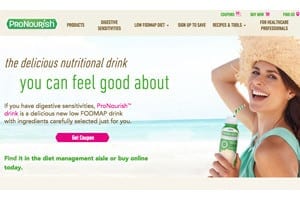
In the Most Wanted series, Chief Marketer looks at some of the top demographic segments marketers need to target in 2017. In this week’s spotlight, physicians.
Who: The market consists of exactly who you think it does—the nation’s nearly 847,000 active physicians.
The Stats: According to the American Medical Association, as of 2014 nearly 61% of physicians still worked in practices with 10 or fewer doctors, so they make their own buying decisions. Just shy of 51% of physicians owned their practices.
Why You Want to Reach Them: Not only are physicians consumers, but they are also influencers to their patients. As a result, their reach is significant: General practitioners, who make up about a third of all physicians, receive an average of more than 3,500 patient visits a year, according to Statista; specialists receive a far fewer, but still appreciable, 2,700 visits a year.
And in addition to prescribing medications, physicians recommend a broad range of products to improve their patients’ health and wellness. These include sports apparel, personal care items and even food, says Brian Lefkowitz, executive vice president/executive creative director for Philadelphia-based marketing company Digitas Health LifeBrands and Publicis LifeBrands Medicus. “In addition to any regimen that a doctor can prescribe, there’s an exercise and diet component. It’s important for physicians to know what’s new to help their patients live healthier and happier lives.”
Preferred Channels: Physicians overwhelmingly prefer to be contacted by marketers via email, according to HealthLink Dimensions, an Atlanta-based data solutions provider. Of 760 physicians and nurse practitioners surveyed in 2016, 68% cited email as their contact method of choice. In comparison, direct mail and in-person visits from company reps were tied for second place, with 11% each.
Medical professionals also head to the web to seek out relevant information about products. A 2015 HealthLink Dimensions study found that more than two-thirds of physicians turned to WebMD, an informational website for consumers, as a trusted source of info. In comparison, 46% of doctors looked to medical journal websites for information about products and diseases.
Whether you’re communicating to the audience via email or your website, make sure the messages are mobile-friendly. As more Gen Xers and millennials enter the field, physicians are becoming less tethered to computers and are migrating more to tablets and smartphones. “You need to embrace mobile with physicians because they spend so much time on it,” Lefkowitz says. “Mobile has got to be number one, whether it’s the rep-sent email or mobile-enabled websites or apps.”
As to the messages themselves, “Physicians and nurses don’t want to be sold, they want to be educated,” according to a report from King of Prussia, PA-based marketing company PharmaLeaders, “Healthcare Professionals Want to Hear from You…but How?” “Marketers need to build an effective communication strategy around giving healthcare professionals valuable information and education instead of trying to sell them on specific products.” The report notes that nearly 72% of the practitioners surveyed wanted to receive industry-sponsored accredited continuing medical education (CME), and just shy of two-thirds wanted disease-state information and patient education materials.
Don’t be afraid of using new media to impart information. Lefkowitz suggests educational videos and even Tumblr pages to create “digestible” content. After all, in some ways marketing to physicians isn’t that different from marketing to their patients—or anyone else, he adds. “A lot of times people think physicians are different. They’re really not. No one ever bought solely because of a scientific fact.”
Who’s Getting It Right: ProNourish, a nutritional drink from Nestlé Health Science for people with “digestive sensitivities,” manages to speak to both healthcare professionals and end users, often via the same channels. Its advertisement on WebMD focused primarily on educating readers about the low-FODMAP diet developed by researchers at an Australian university to ease the symptoms of irritable bowel syndrome (IBS). While the web page did include links providing more info about ProNourish and why it was suitable for those with digestive issues, most of the links led to additional information about the diet.
One link directed readers away from WedMD to LowFODMAPcentral.com, a Nestlé Health Science microsite providing more detail on the diet and how it can minimize or eliminate digestive issues. The microsite included a page exclusively for healthcare providers with links to research studies and articles. This page, like the microsite overall, was dedicated to educating. ProNourish wasn’t even mentioned on the landing pages; one had to drill down to find references to and info about the product. What’s more, the consumer-focused pages emphasized the need to consult a doctor before starting a low FODMAP diet.
Another website, ProNourish.com, focused less on education and more on the actual product. Even this site, though, had a section dedicated to healthcare providers, where they could sign up to receive product samples to pass on to their patients.
By providing physicians and patients with varying levels of information about the problem (IBS and other digestive issues) and treatments, ProNourish emphasized helping rather than selling, one of the keys to marketing to healthcare providers. What’s more, it encouraged conversations between physicians and patients, and by offering samples to doctors, it made the most of the doctors’ potential as influencers.
Related Articles:
Marketers’ Most Wanted: Millennials
Marketers’ Most Wanted: Teachers
Marketers’ Most Wanted: Sports Fans
Why Healthcare Marketing Needs to Catch Up
Six Reasons Brands Should Use Health and Wellness Influencers




